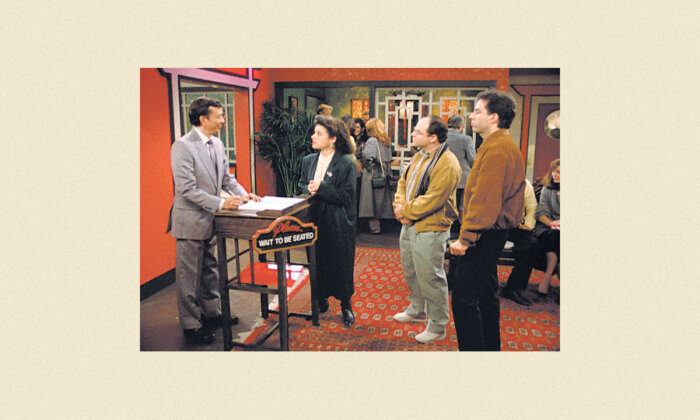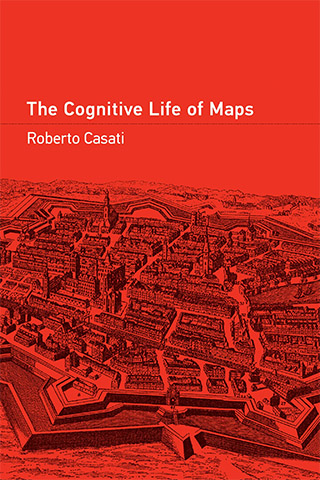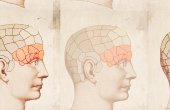On Queuing: The Cognitive Logic Behind Lines

Queuing is often a cultural marker. In some countries, it’s a point of honor; in others, any means would seem legitimate to avoid it.
The stereotypical Italian in London is frustrated because he realizes that he won’t be able to use one of the many stratagems to avoid waiting in line. (Among them: pretending to ask for innocent information directly at the counter; pretending to know someone at the head of the queue; walking straight to the front as if returning for a second time; or simply applying John Le Carré’s golden rule for going unnoticed — imagining that you own the place.) The stereotypical Brit in Rome does not know how to get to the only open counter: Behind which person should he stand in line?

But the queue is a complex institution that transcends cultural differences. How people choose to stand in line appears to be deeply rooted in social cognition, defining something that is almost an ethics of queuing. The deepest explanation of the peculiarities of queuing behavior might be one of a perceptual nature: Simply, the queue makes visible to an individual how he or she should behave compared to all the people who came before them.
When we queue, our brains switch gears from what Daniel Kahneman calls System 2 thinking — a slow, deliberate process that demands focus and draws on memory — to System 1 thinking, where decisions are made quickly and instinctively, though with less precision. This mental shift highlights the unique role of queuing as a social institution: The action presupposes the recognition of shared rules and behaviors.
If an extraterrestrial entered a post office and saw people in line, they would immediately recognize it as some form of social behavior and assume there was some reason for the configuration. It is evident that since everyone is doing a certain thing, we are asked to tune in to the collective behavior, or at least to inquire about it.
The basic rules of queuing are simple:
1. Whoever arrives first is served first.
2. Latecomers join at the end of the line.
3. No one is served until the person before them is.
In a metaphorical sense, the queue turns invisible time into visible space. It translates temporal priority — an abstract and invisible concept — into a concrete and visually apparent spatial priority. Consider how people in a queue naturally face the same direction. Now, try this experiment: Gather a group of friends and line up at the counter of your local post office — but instead of facing forward, turn so that your backs are to the counter. Then observe the reactions of the customers who arrive after you. Where do they think the end of the line is?
In a metaphorical sense, the queue turns invisible time into visible space.
This transformation of time into space has clear cognitive advantages when it comes to the ease of drawing conclusions from a visual examination of the line. The presence of the queue says: “No anarchy here, there is a social event to be part of if you want to get to the counter.” Conversely, being a member of a queue also means performing a role for all those who see the queue; by showing that you are in the queue, you indicate the rules of the game to those who want to play along. Finally, there are subjective cognitive advantages to queuing: The fact that you are in line allows you to keep an eye on only one customer at a time, the one who is immediately before you in line.
The Paradox of Queuing
While the queue offers cognitive advantages — such as its immediate readability, the many inferences we can draw from a quick glance, and the relief of not having to continuously assess our place in line — this doesn’t mean our intuitions about queuing are always clear.
In particular, it is unclear to those who queue whether queuing is a useful thing. This lack of clarity becomes evident in situations like boarding at an airport gate, where a traveler can roughly estimate how many people are in line. No additional passengers, aside from the occasional latecomers chased by loudspeaker announcements, are expected to arrive. Yet, people still line up for boarding — often everyone joins the queue, even though those at the very end, precisely because they are last, have no real reason to do so.
The opacity of intuitions crystallizes in a real paradox:
(a) If you are the last person of the queue, every second spent in the queue is wasted. If one knew that one would definitely be the last person queuing, as in the boarding queue, one could do something else.
(b) If you are in any position other than last, you are not wasting your time. In fact, you are gaining time compared to whoever comes next in line. If you arrived after them, you would spend more time queuing.
From these two facts, it follows that in order to avoid wasting time in line, you must hope that someone will line up behind you during the same amount of time you spend waiting. But this is problematic. The time spent in line, with or without someone behind you, is the same. Think about the following, slightly surreal, conversation where Person A says, “I wish I wasn’t the last one in this line.” Person B responds, “In the sense that you would like to exchange places with someone in front?” And Person A insists, “No, in the sense that I would like someone to enter the queue after me.”
The solution to the paradox is simple; it is our intuitions that are confused. If you are certain you are the last in line, the best thing for you is really to go away and do something else. The explanation of the difficulty we have with our intuitions must take into account the delicate balance between the many factors that determine the behavior in line.
The cognitive advantage of the queue, based on its evident structure with simple visual inspection, comes at a cost. For a queue to be perceptually salient, it is necessary for each participant to do her part — remaining in line — even if she knows or fears she is wasting her time. But in this case, being last in line can incur significant costs, as it wastes all the time spent in line, and on top of that, it frustrates the performative work of queuing. Without anyone behind the last person, the perception of order is lost. The marginal benefit for the last person in line is largely symbolic: They uphold the cognitive script of the queue, serving as an implicit guide for any newcomers, even if this role has no practical effect.
This dynamic highlights how queuing is not merely functional but also a social institution shaped by powerful taboos that are difficult to negotiate. I observed this firsthand at Newark International Airport during a night of canceled flights and missed connections, waiting in a long queue for a cab. At a certain point, an elderly person arrives slowly pushing a trolley loaded with luggage, approaches the head of the queue as if there was no one waiting, and talks to the first person in the queue, who is about to take the first unoccupied cab. Then, she approaches the second person. Finally, the elderly person joins the third person and after a brief conversation, she gets into the car with him. Those of us who are far back at the end of the queue mumble. We soon learn that the lady was looking for someone who had a destination close to hers and that in exchange for the possibility of getting into the cab with him or her, she paid for the ride.
The marginal benefit for the last in line is largely symbolic: They uphold the cognitive script of the queue, serving as an implicit guide for any newcomers.
Now there is something in the lady’s behavior that seems not quite right, but what is it? She hasn’t stolen anything. She’s paid her fare. Of course, the person has also made a profit. A profit is made, in the sense that even though the elderly person paid for the ride (which she would have done anyway), she gets to arrive at her destination long before she would have had she queued, and gets to avoid the inconvenience of the queue itself. And yet, no one seems to lose: not the first two customers in line, who still took the cab when they were supposed to take it, and not the third person in line, who hit the jackpot.
The lady is violating the paradigm, the script of queuing, introducing a deviant behavior. But which aspect of the script forbids her to do what she did? The rules do not prohibit the purchase of a place in line. Should we then imagine that there are some additional rules that we have not considered? A rule like the following one?
You cannot sell your place in line.
Let’s ask ourselves what may be the reasons that make us resentful or perplexed. Maybe the elderly person does not pay the cost that we “pay” in terms of time by standing in line. But then, why did we not go there ourselves and ask the first in line? Or, the elderly person arrived last and left first, and therefore her behavior is unfair to the person she bought her position from, who leaves when she leaves but had to wait before leaving with her. However, the elderly person paid, and the person “sold” his place in line, and besides, why should we, from the back of the line, sympathize with the first person in line?
At the end of the day, the rules of the queue exist not just to maintain order but to preserve the queue itself as a recognizable institution — one that regulates access to resources through its simple yet effective visibility. This primacy of perceptual functionality explains why we often favor standing in line over informal alternatives, such as asking who is last.
Queues are dynamic maps of time and space. They move, albeit slowly at times, and their movement is essential: A stagnant queue threatens its purpose and frustrates its participants, eroding the trust that keeps the institution functioning. Ultimately, the queue is more than a mechanism for resource allocation; it is a testament to the fundamental principles of human cognition and cooperation.
Roberto Casati is the Director of the Jean Nicod Institute and Professor at EHESS in Paris. He is the author of several books, including “The Cognitive Life of Maps,” from which this article is adapted. A freely downloadable open access edition of the book is also available here.




